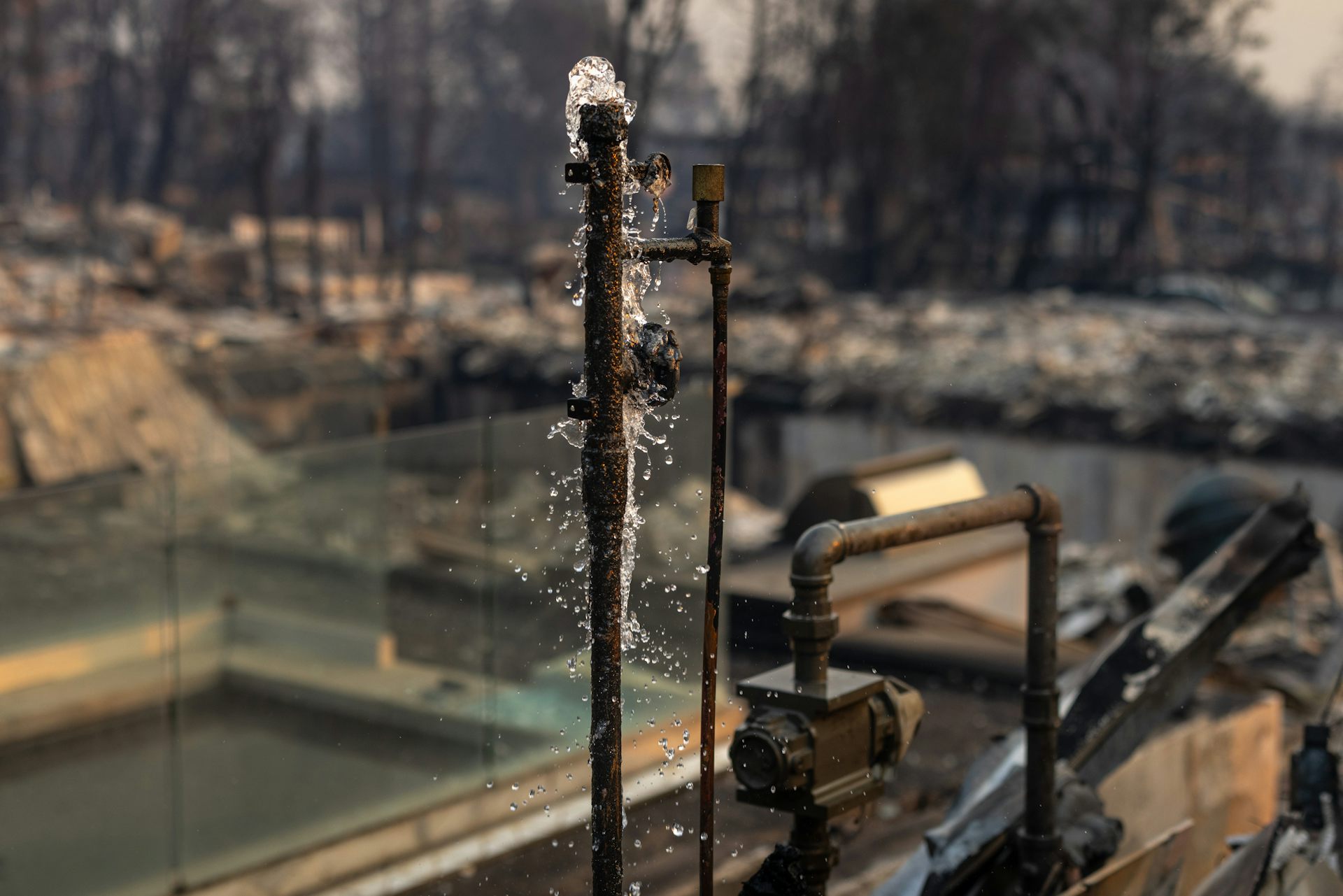Food & Climate
As Los Angeles wildfires continue, several utilities have declared their drinking water unsafe until extensive testing can prove otherwise, and the companies raise the slogan “Don’t drink”.
A warmer, drier climate means wildfires are getting worse, and encroaching on cities – with devastating impact. Toxic chemicals from those burns can get into damaged drinking water systems, and even filtering or boiling won’t help, experts say, according reports seen by “Food & Climate” platform.
Last week, Pasadena Water and Power issued a “Do Not Drink” notice to about a third of its customers for the first time since it began distributing water more than a century ago. With at least one burned pump, several damaged storage tanks, and burned homes, they knew there was a chance toxic chemical had entered their pipes.
“Out of the abundance of caution, you kind of have to assume the worst,” said Stacie Takeguchi, chief assistant general manager for the utility.
Los Angeles wildfires
Los Angeles wildfires have destroyed thousands of structures, many of them homes, and firefighters continue to battle the infernos. Parts of Pacific Palisades, Altadena, Pasadena and other California communities are now unrecognizable, according to “The conversation“.
As evacuation orders are lifted, safe drinking water should be top of mind for those residents able to return to their homes.
What many people don’t realize is the extent to which their community drinking water systems can be damaged by fire, how their water is affected and what they can do about it.
When large fires burn in towns and cities, rather than forests and grasslands, infrastructure can be heavily damaged. When drinking water systems are damaged in a fire, “we can have ash, smoke, soot, other debris and gases get sucked into the water piping network,” said Andrew Whelton, a Purdue University engineering professor who researches water contamination in communities hit by fire, according to “abc7”.
Those elements can be particularly toxic because chemically engineered synthetics in building materials and households are heating, burning and releasing particles and gases, he said. Some of those chemicals are harmful even at low concentrations, experts say.

Drinking water systems are designed to be airtight to keep harmful elements out. But that critical pressure can be lost in many ways during a fire, which means toxins can get in.
There’s normal demand on the water system from people who didn’t need to evacuate. Firefighters use a lot of water. Pipes in burned buildings can be damaged, spewing water.
Power loss can also cause pressure loss when pumps stop working, said Greg Pierce, professor of urban environmental policy at the University of California. This happened during the 2023 Maui fires.
“It’s really hard, if not impossible, to keep up the power supply to the whole water system in the event of a fire, because you’re either shutting off the power, because power can contribute to the fire, or it just goes out,” Pierce said. “And then you’re relying on generators at best in spots.”
The loss of pressure can affect not only water quality but also water availability for firefighting. Hydrants ran dry in the Pacific Palisades neighborhood as surrounding homes burned. The utility says it was from high demand and the pumps were working, but California Gov. Gavin Newsom said the state will investigate.
In the Paradise Fire
Vast Los Angeles County has more than 200 water service providers, but so far only a handful believe that damage or loss of pressure may have resulted in chemical contamination and have issued “Do Not Drink” notices. Utilities are focused on ensuring there’s enough water for fighting fires, though some are beginning to test for contaminants. It can take weeks to months of testing before water can be declared safe for drinking in areas with minimal damage.

In the Paradise Fire, most buildings burned. The city rebuilt a reservoir and is working to replace 10,000 service lines. It expects to spend the next decade and $50 million to replace roughly 17 of 172 miles of main lines that were contaminated.

